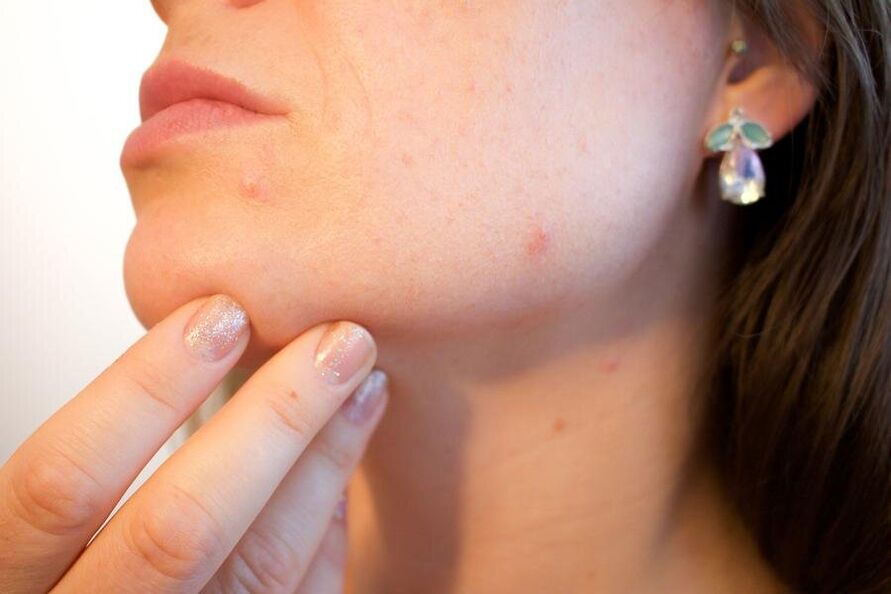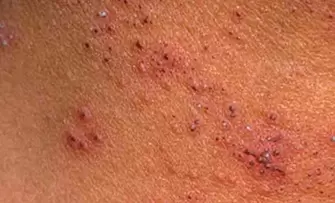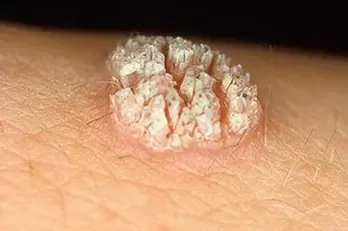In order to fully answer this question, it is necessary to delve deeper into the essence of the penetration of the infection into the human body. Many experts have made many efforts to explore the full nature of the appearance and development of HPV, which is so well known today. The human papillomavirus has been studied very thoroughly over the past 30 years. As a result, and during the research process, more than 100 strains of the nature of the disease have been discovered. The papillomas in the body are not of the same type, but are malignant or benign.

HPV is a neoplasm that appears on any part of the skin or inner lining. Unfortunately, however, some strains turn the subsequent pathology into malignant tumors. You need to know absolutely everything from "A" to "Z" about these types.
Types of skin growths
The appearance of an overgrowth on the skin of the body is indicated by a decrease in the immune system. He is the one who has a protective function and acts as a kind of obstacle. When certain types of human papillomavirus enter the body, immunity does not allow HPV to take root. This has been confirmed by research.
Long-term medical practice has allowed all papillomas on the skin to be divided into three types:
- Non-oncogenic type HPV (such increases do not cause cancer but reduce immunity).
- The virus is not of the high oncogenic type (there is a low threshold for the occurrence of the pathology).
- Oncogenic risk infection (due to the high threshold of oncology).
The sign of the papillomavirus found on the skin is already, though not great, a cause for concern. Do not leave growth unattended (especially in the genital area). Consult your dermatologist for a complete understanding of the type of appearance of the neoplasm. Initially, the doctor performs a visual examination and, if necessary, writes direction for further analysis and research.

Do not start self-medication if you do not know what your papillomas are - this can lead to irreparable consequences.
It is important that you talk to your doctor about prescribing antiviral therapy. Removal of papillomas without medical treatment does not guarantee a sustainable result, as the next decrease in immunity will allow the papillomas to regenerate due to viral activity.
The number of existing tumors can be put at ten. You need to figure out what the papillomas are, and keep in mind that the full range of growths shown fall into five categories. These were categorized according to symptoms, color scheme, and risk of oncogenicity. Each group will be covered in more detail later. Thus, the types of papillomas are divided into 5 types.
The first type is simple papillomas
Group I - simple papillomas. Another name is common or vulgar growths. This type of papilloma is widespread. It is a clear sign of a small increase in the appearance of the skin. During the process of developing known types of papillomas, it is transformed into a dark-colored, keratinized tuber. The common wart is localized on the skin, both in a single form and in whole groups. The favorite places for moles are the hands (inside and outside of the hand) and the lower part of the face (essentially the lips and chin).
It should be noted that there are plantar papillomas, practically no different from vulgar growths, only the keratinized outer shell gives off their affiliation. Such warts cause discomfort while walking. Getting rid of them is not easy, but it is very possible at home.
The second type is flat

II. group - flat papillomas. A characteristic feature of the species, the manifestation of the group accumulation of growths. They have virtually no bumps and are dark in color.
The growths are rounded, elongated, oval in shape, rising 1-2 millimeters above skin level. Flat papillomas are located around the mouth, on the face, in the upper half of the body. Sometimes papillomas develop in the neck. Place of distribution - upper body. In some cases, it has been observed in the genital area. Skin papillomas still belong to this group and occur mainly during adolescence. Warts are found on the neck, face and hands of young people. The main reason for this appearance is the failure of the immune system.
There are papillomas in the labia, in the cervix in girls, in the penis, in the rectum and near the anus in men. These formations are organized into groups, merging with each other. Flat, flesh-colored papillomas, which are sometimes slightly darker than the rest of the skin, are caused by 10, 49, 28 types of papillomaviruses.
The third type - pointed
III. group - pointed papillomas on the face and other areas. Another name is warts. The main site of dislocation of neoplasms is the mucosa. Most often, they affect the genitals and the body, impair its appearance, and affect everything internally. These strains are considered to be oncogenic risk. It is characterized by the fact that it develops rapidly from one copy to more in a short time. The mode of penetration of genital warts is sexual contact. The presence of pointed moles is undesirable for pregnant women as there is a possibility of infecting the baby. The latter can occur when the newborn passes through the parent canal.
The fourth type - filiform papillomas
ARC. group - filiform specific papillomas in the body. In the scientific world, it is called an acrochord. A characteristic feature of tumors is the obligatory foot, which holds the mole itself. The age group is middle-aged as well as older women and men. Such increases are most commonly referred to as senile.
The human papillomavirus has been developing in the body for years and only appears as a wart after a while. Location of neoplasm: eyelids, neck, armpits, inguinal zone, and chest. These increases are traumatic and often break out of negligence. This is a very dangerous phenomenon, so it is imperative to show the wound to the doctor.
Fifth type - internal
Group V - internal moles. This subgroup includes all neoplasms that are formed in the internal organs of the body. These include warts on the walls of the stomach and rectum. Growths in the mouth and throat, formations in the bladder. The presence of condylomas in this group cannot be detected on its own as it requires special diagnostics. But the presence of growths causes severe symptoms. How dangerous tumors are to the human body is definitely impossible to say. The research is done annually and constantly yields new results.
But one thing is clear, this fact cannot be ignored. For example, an increase in bladder can lead to internal bleeding or eventually lead to cancer. Laryngeal warts interfere with breathing and speech. Otherwise, the latter are also able to localize in the newborn - so the pregnant woman needs to be especially vigilant.
Causes of papillomas
HPV is an infection that causes any growth in the human body. Some strains of neoplasms are transformed into cancerous tumors. Here are the most common causes of infection:
- constant change of sexual partners;
- presence of bad habits (alcohol, smoking, drug addiction);
- decreased immune protection;
- violation of physiological processes in the body;
- careless attitude to personal hygiene (use of other people’s personal items).
Common symptoms for all types
The most likely manifestation of the presence of HPV in women in the body is the external presence of growths. All characteristic properties depend on the location of the neoplasms. Let’s take a closer look at the obvious symptoms, depending on the type of papilloma and its types.
- Pointed condyloma. It occurs on the mucous membranes of the genitals, larynx, mouth, and the inner wall of the stomach and rectum. It is accompanied by a slight itching and unpleasant odor on the genitals. It is not desirable to ignore this type of growth, as oncogenic pathology can have catastrophic consequences.
- Intraductal papilloma. The origin of the duct in the mammary gland. Signs of growth include redness around the nipple, mild itching and a burning sensation. Light pressure on the nipple releases ichor or greenish secretions. Breast papilloma is not initially a cancer, but in a neglected state it develops into a malignant tumor.
- Plantar warts. Outgrowths are indicated by a yellowish corn formation on the base. While walking, pressure and squeezing cause discomfort. Painful feelings are manifested in sharp and acute pain in the neoplasmic zone.
- Papilloma in the throat. The initial stage of growth is not indicated by significant symptoms, but as the development progresses, the symptoms intensify. The voice changes, there is a feeling of coma in the throat, the function of breathing is disturbed. Salivation and food are difficult to swallow.
- Flat warts. In adolescents, they occur on the lower part of the face and arms (the outside of the hand). There are no severe symptoms. Only sometimes there is a slight itching.
Treatment of neoplasms on the skin
If you find growth on your body, consult a dermatologist to prescribe the latter treatment. Do not self-heal as some strains are highly oncogenic (this applies to both men and women).
The external signs of HPV (human papillomavirus) in the form of neoplasms are not all. These growths can easily transform into malignant tumors, and this is already dangerous. It should be noted that the human papillomavirus remains in the body for the rest of its life. As a result, it is only possible to reduce the activity, in other words, to put the infection to a "sleeping" state. But laser therapy helps to eradicate the mole completely painlessly.
Be aware of external changes in the skin and consult a doctor in time. Take vitamin complexes and support your immune system. Follow certain rules and your health will be safe. In addition, the types of papillomas on the face, as we’ve found out, and which photos can be seen online, are different, and before you apply for removal, you need to find out what strain it is. Any description can be found on the World Wide Web.























